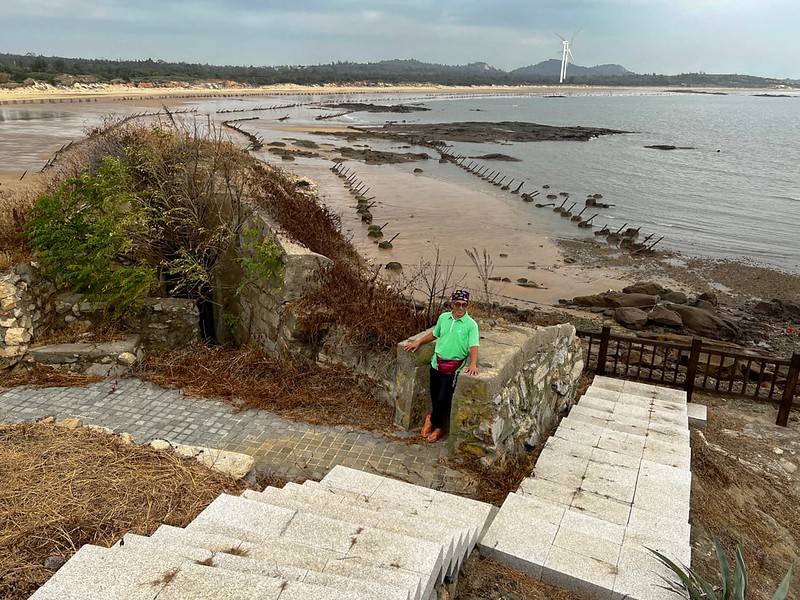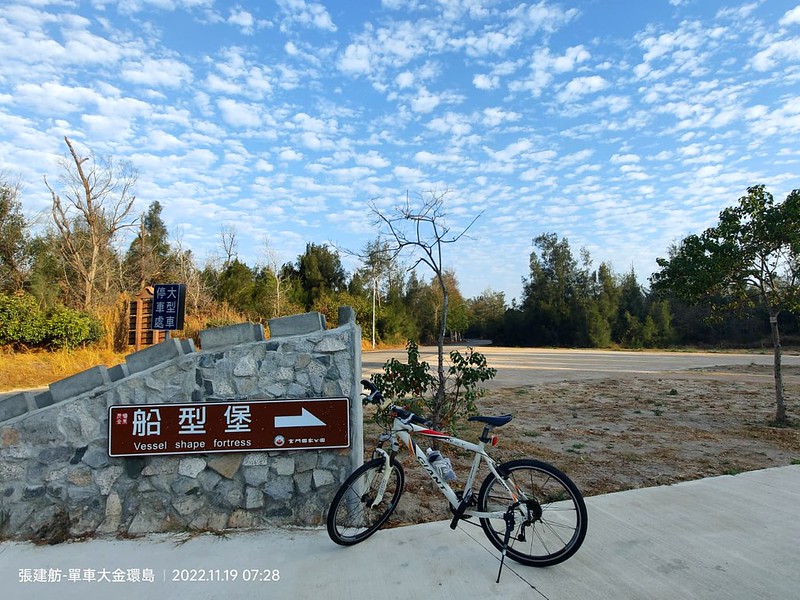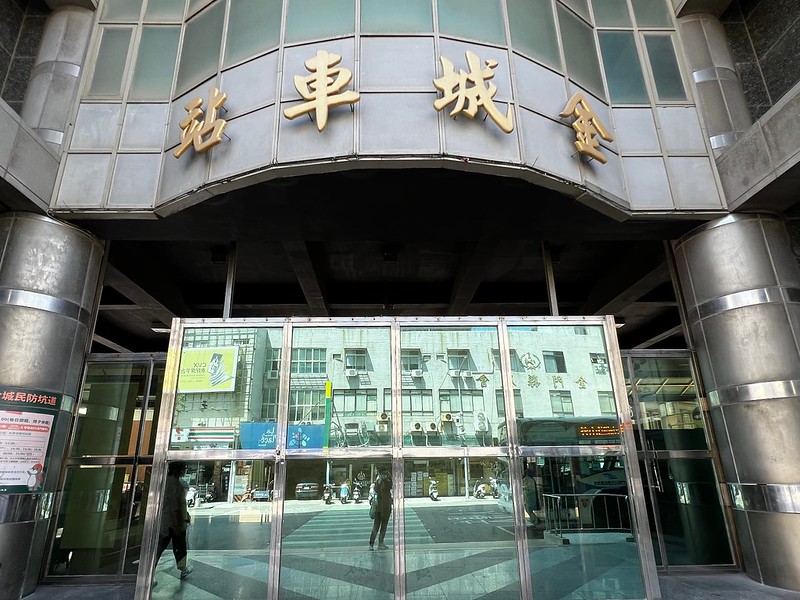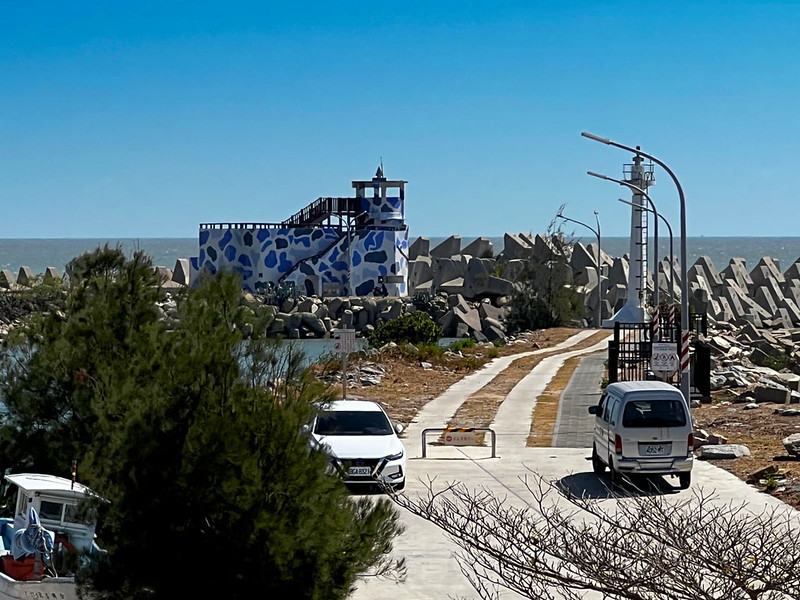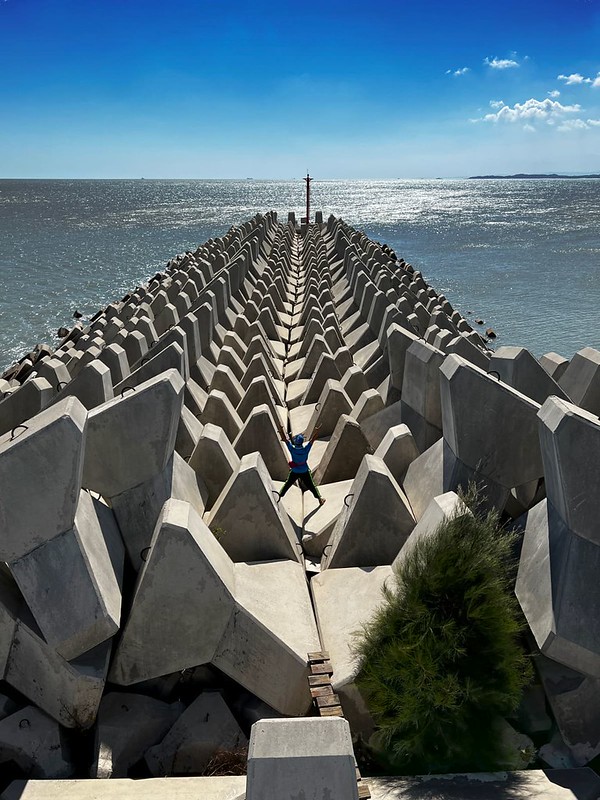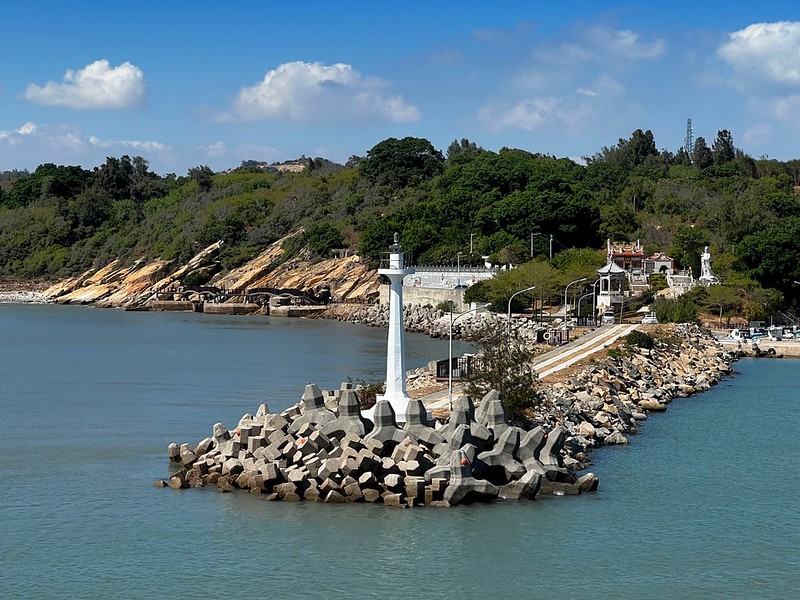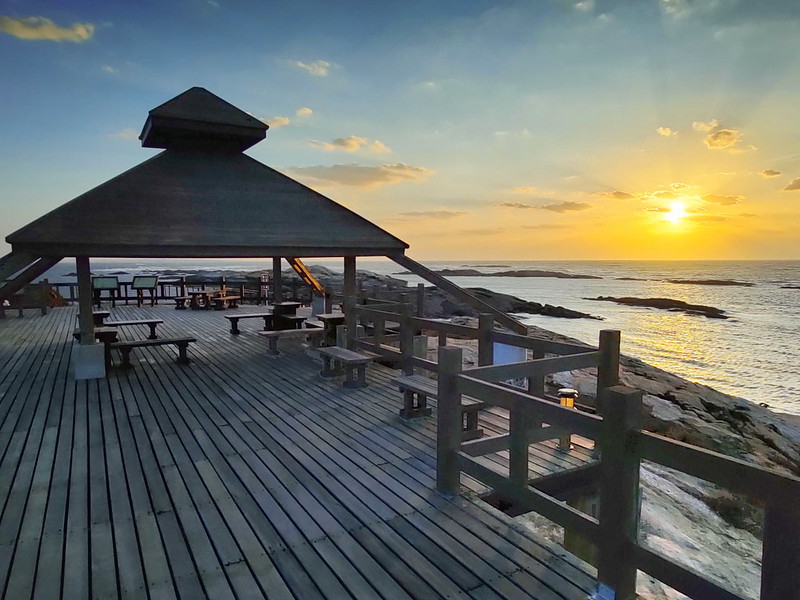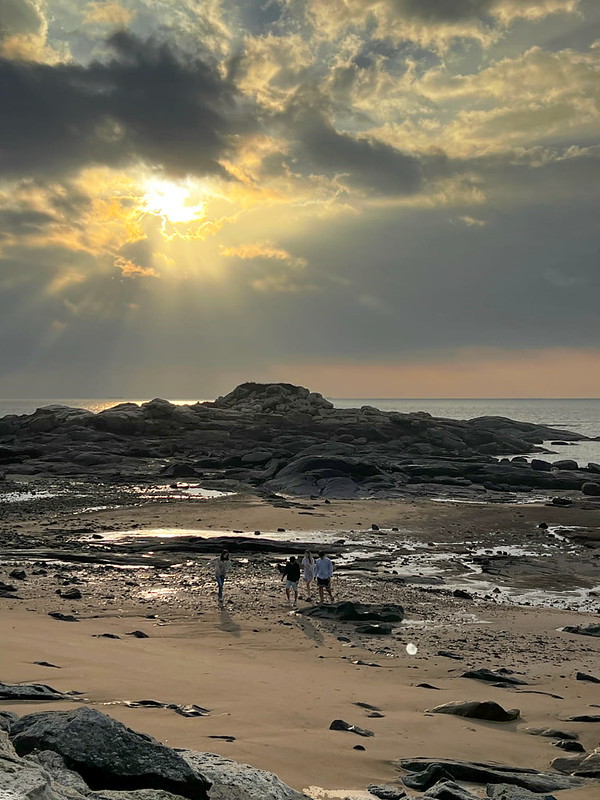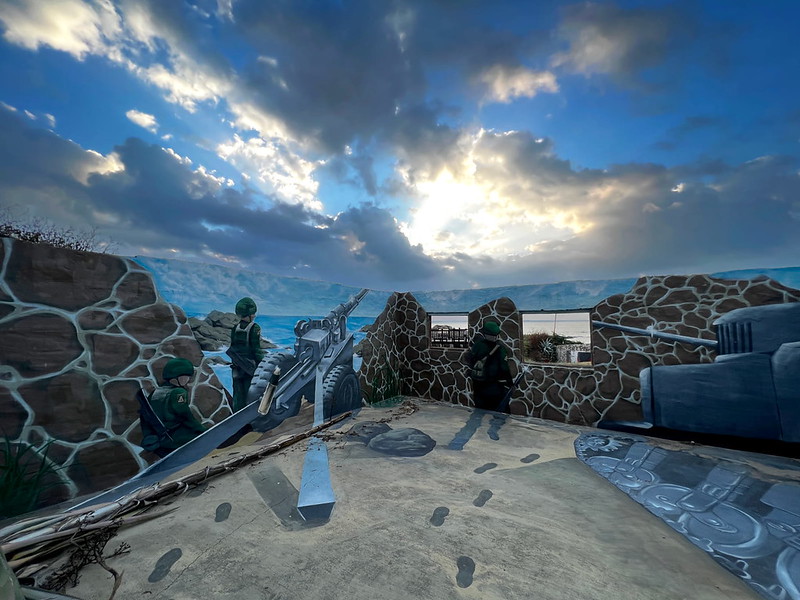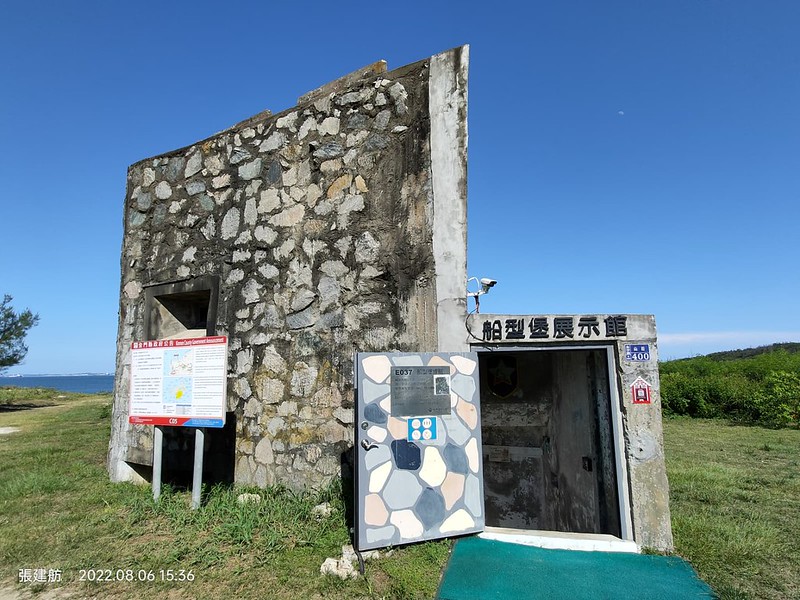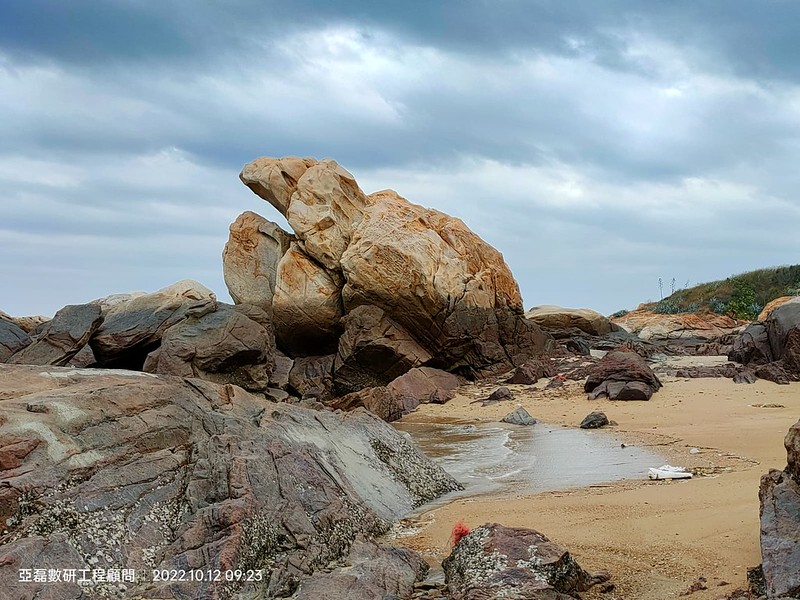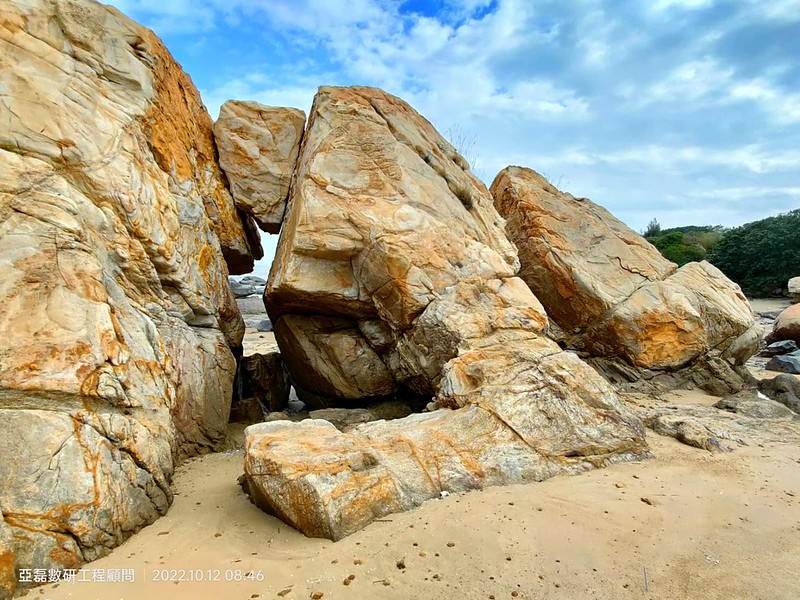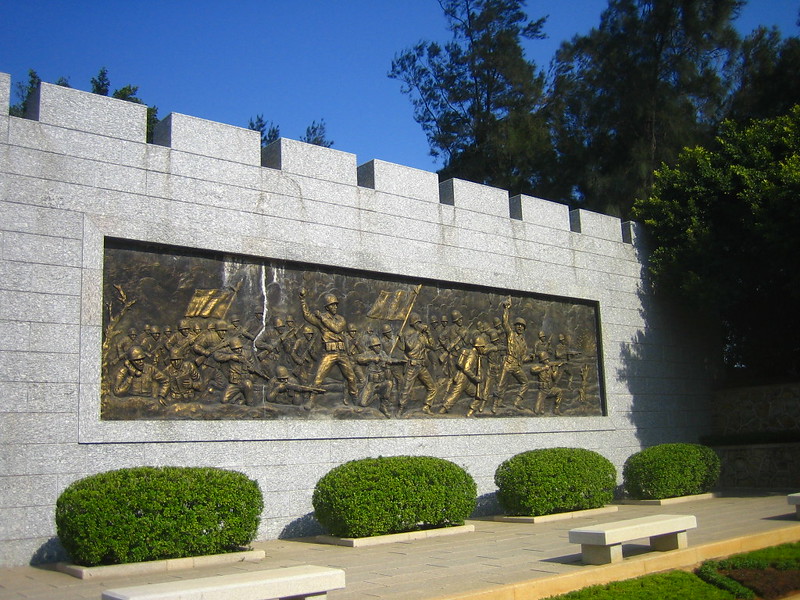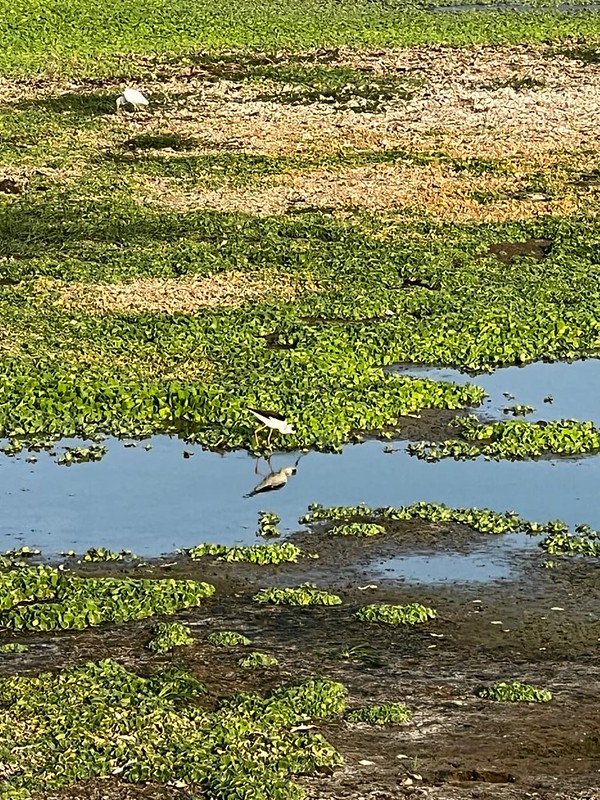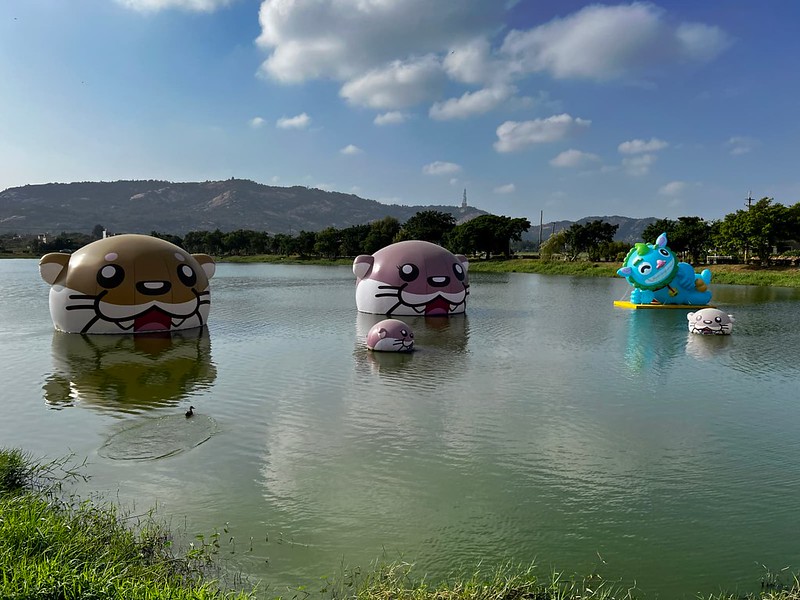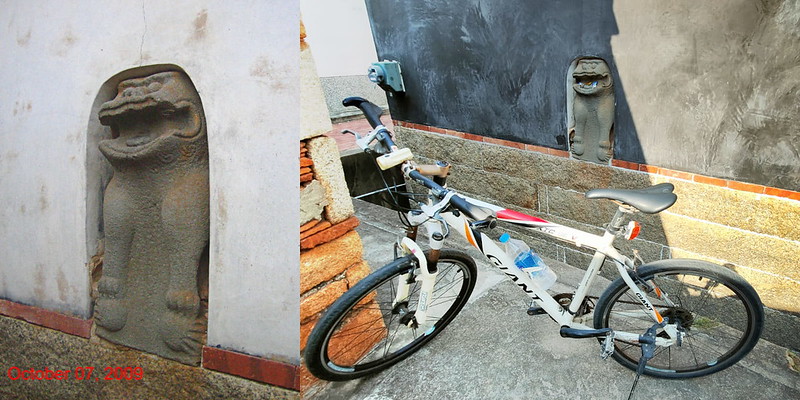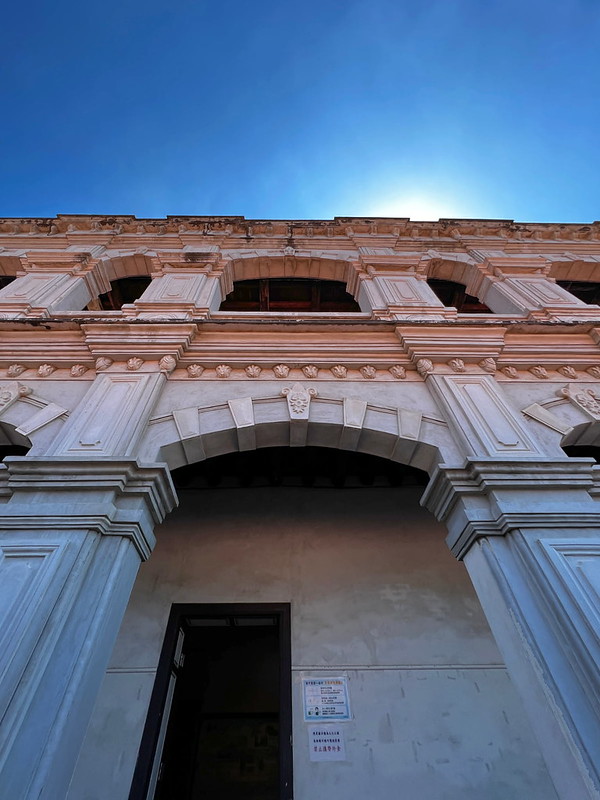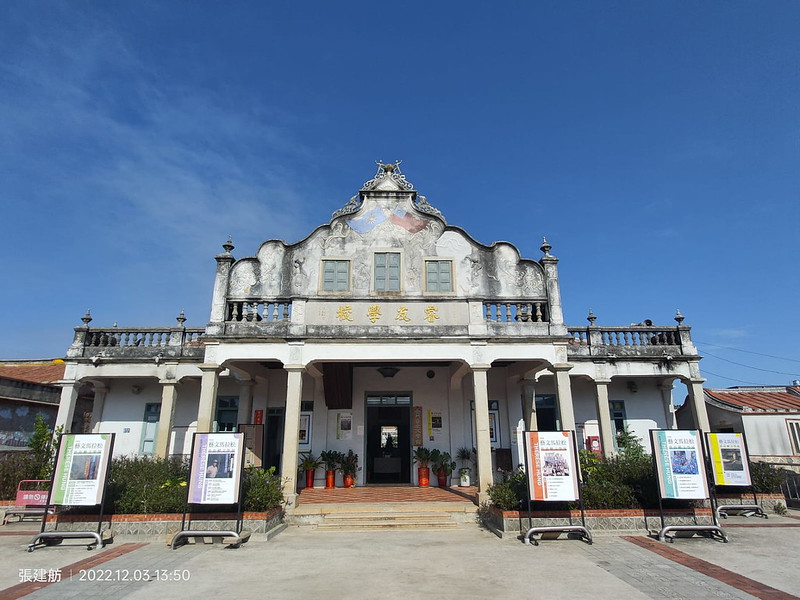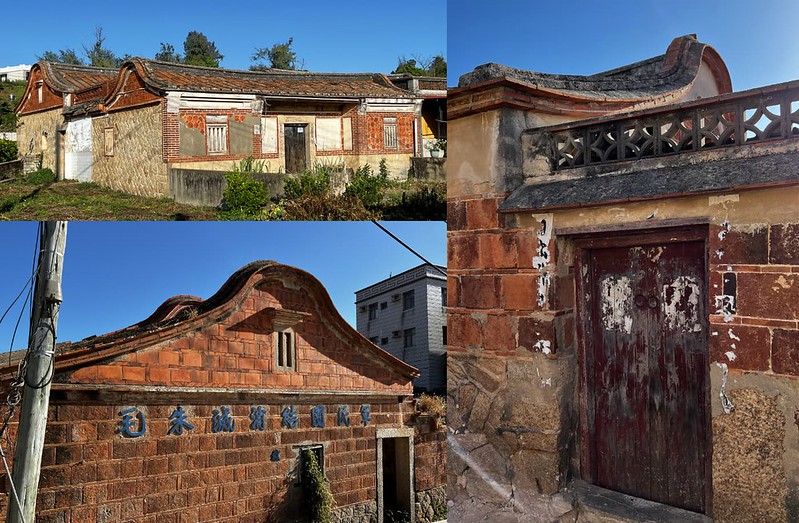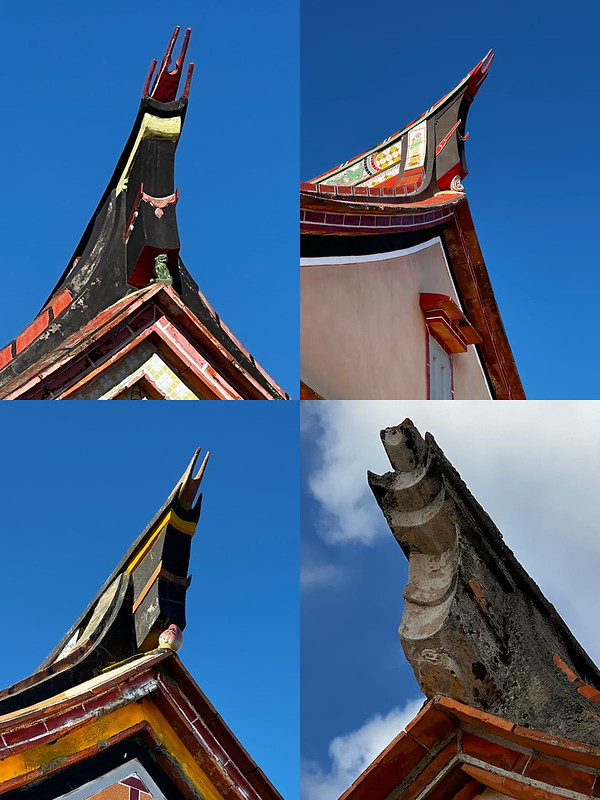Discover Kinmen's Beauty: Cycling Expedition Through Historic Military Strongholds on the East Coast
Nestled within the embrace of the Taiwan Strait, a mere skip away from China's southeastern coast in Xiamen lies the mesmerizing Kinmen (Quemoy) Islands. This destination is an undiscovered treasure trove for those with a penchant for a seamless fusion of history, culture, and natural wonders.
Though Kinmen boasts a compact size, covering just over 150 square kilometers, its profound heritage and picturesque panoramas create an exquisite canvas perfect for exploration on two wheels. Embarking on a cycling adventure around Kinmen Island promises an enthralling voyage, unwrapping a vivid tapestry of sights and experiences.
My friend, Mr. Chang Jian Fang 張建舫, has graciously revealed Kinmen's hidden treasures and collaborated with me on this exclusive Kinmen series. Our shared preference for unspoiled, traditional, and lesser-traveled spots, particularly the coastal marvels, has shaped the essence of this Kinmen series.
Table of Contents:
Exploring Taiwan? Save Time with the Ultimate 2025 Hiking Guide! Discover the top hikes in every city and county across Taiwan—all accessible by public transport (bus links available). We've spent 50+ hours researching the best trails and transit options, so you can skip the hassle and start your adventure!
How to Go to, Get Around in Kinmen, and Where to Stay
How to Go to Kinmen
There is no ferry service from Taiwan to Kinmen. There are two airlines, Uni Air 立榮航空 and Mandarin Airlines 華信航空, running flights to Kinmen from Shongshan Airport (Taipei), Taichung, Tainan, and Kaohsiung.
Biking along Kinmen's coastline reveals breathtaking sea vistas, with pristine beaches and rugged cliffs creating a dramatic contrast. With its golden sands and clear waters, Jinsha Beach is a popular spot for cyclists to take a break and soak in the coastal beauty.
Some homestays (B&B) offer free bikes for their customers. Or renting a scooter if you have a license is also a good option. Please note that some trails are not for scooters.
If your B&B doesn't have free bikes, you can use QBike, and here's the map of the bike stations.
Map of My Favorite Spots
Here is the map of the spots I enjoyed when visiting Kinmen in September 2023. The following content is not written in geological order, but you can follow Google Maps to find them.
To Bike or Not to Bike?
If you don't bike often and are unsure about cycling around in Kinmen, I found a Facebook post by a hostel in Kinmen for your reference.
According to the post, the distance for cycling around Kinmen Island is around 110 km (68.35 miles) and 20 km (about 12.43 miles) for Lieyu (Little Kinmen). The area of Kinmen and Little Kinmen is around 150 ㎢, which is ten times the size of Green Island 綠島, 22 times of Xiaoliuqiu 小琉球, and larger than the total area of Penghu Islands 澎湖群島.
The distance to cycle around each township is around 30-40 km, plus the millages to each spot scattering around at each township. The total length to cycle to each location and back to the hotel can reach 50 km (31 miles) per day.
Scooter rental is an alternative if cycling is too much for you.
Other Ways to Get Around in Kinmen
You can choose regular public buses or guided bus tours. The bus fare for regular public buses is NT$12 per person one way.
The guided tours are NT$250 per person, lasting around one morning or afternoon. There are several routes taking tourists to the most popular attractions.
You can combine different transportation to explore Kinmen fully. Please check the Kinmen government's website for all the details about the buses, scooter rental, taxis, etc.
Where to Stay
When I first visited Kinmen in 2009, I stayed at Yang Lou 洋樓, which was a unique experience. You can also stay at the traditional homestays or the Western-style old house.
One more crucial tip is staying well-hydrated during your bike or scooter journeys. Putting sunscreen and wearing a hat help prevent sunburns.
Kinmen East Loop: Jinhu Township
Let's start the journey in Jinhu Township as we set off on the Kinmen East Loop. Next to the airport, this township serves as our gateway to an enchanting exploration of history and picturesque coasts.
Beaches and Coastal Scenery: Shangyi Seawall 尚義海堤 and Chenggong Beach 成功沙灘
This place is close to Kinmen Airport. You will see white-sand beaches with rock shores. You can ride a bike along the sea wall and then return to Huandao South Road and go to Chenggong Beach 成功沙灘. This place is famous for sunset sightings.
If you come at the right time, you might be able to see Blue Tears 藍眼淚 or Sea of Stars. This phenomenon is a Bioluminescence, the emission of light caused by living organisms, a single-celled alga called Noctiluca scintillans or sea sparkle.
Kinmen is not the only place to see this bioluminescent phenomenon. Visitors can see this phenomenon in Matsu, too. Blue Tears can be seen from March to September, but the chances to catch a glimpse of them are better between April and early June when the tide is high, and there is no moonlight.
Beaches and Coastal Scenery: Xiaotin Tunnel 小艇坑道 and Xinhu Harbor 新湖漁港
Then you can head to Xiaotin (Dinghy) Tunnel near Xinhu Harbor. Xiaotin Tunnel is not open to the public, but you can walk on the pavement near a giant Mazu Statue next to Ci Luan Temple 慈鑾宮 and reach the plank footpath above the seawater to see the tunnel.
On the way back to the harbor, you will see a tower-like blue and white building with many massive tetrapods. This is Haitian Fortress 海天堡. Those tetrapods extend into the ocean, and my friend Mr. Chang told me this place has become an IG spot.
I am not a fan of tetrapods, but those looked phenomenal.
Beaches and Coastal Scenery: 82 Stronghold and Liao Luo Seashore Park 料羅海濱公園
If you see a sign with 82 Stronghold 八二據點, here is the place to Liao Luo Seashore Park 料羅海濱公園. The first sight of this park is a jacked frogmen (combat diver) statue on the rooftop.
There is a Frogmen Image Hall 海龍蛙兵影像館 at this park. The frogmen boot camp is famous for its harsh training and Road to Heaven 天堂路. Now this place has become the beachgoer's heaven and the perfect sunset spot.
Beaches and Coastal Scenery: Nanshihu Park 南石滬公園 and Sunset
Unlike Liao Luo Beach Park, Nanshihu Park was a granite quarry. Therefore, the landscape is more rugged, with rocky beaches instead of sand.
There's a fountain here, and it has become a tourist attraction. I prefer sitting by the beach and enjoying the breeze. We sat there briefly before heading to Liao Luo Bay to see the sunset.
When the sun was about to set, we returned to the building on the breakwater to a building, waiting for the last glow on the sea.
Beaches and Coastal Scenery: Fuguodun 復國墩 and Sunrise
Fuguodun is at the eastmost point of Kinmen Island and is full of granite rock formations at the seashore. There are a fishery harbor and an observation deck here.
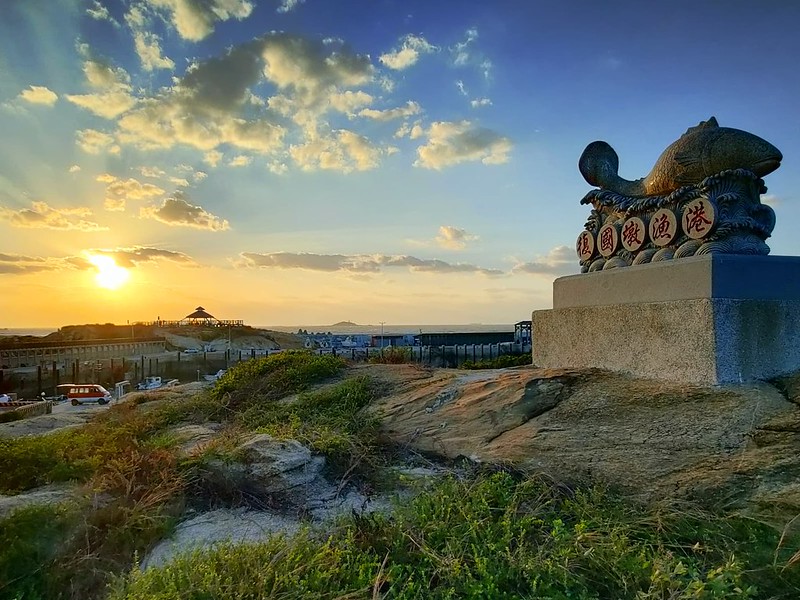
The beaches around Fuguodun are worth exploring. I'm impressed by the amazing rock formations here.
The cliffs formed by the granite rocks are ideal for military fortification.
The old name of Fuguodun was Oyster Shell Pile. Dun means a pile of dirt in Chinese. However, not many oysters can be found here. After doing archaeological research in 1968, the researchers found evidence of human activities and might be one of the origins of Dapenkeng Culture 大坌坑文化.
In the eastmost point of Kinmen, this place is also great for enjoying the sunrise. A desert islet, Beiding Islet 北碇島, is 4.2 km from here. There is a lighthouse on this small islet.
Kinmen East Loop: Jinsha Township
Step into the captivating realm of the Kinmen East Loop, where our next destination beckons: Jinsha Township. As our journey continues northward, we're greeted by the watchful gaze of the Wind Lion Gods and led into the embrace of Jinsha Township.
Beaches and Coastal Scenery: Tianpu Ancient City Wall and Stronghold 田埔古城和據點
The history of the Tianpu Ancient City Wall (an old fort) can be traced back to the Ming Dynasty, which was built to fight against the pirates. After the KMT government retreated to Taiwan, this place became a stronghold.
The seashore around here is beautiful, and the desert islet with a lighthouse, Beiding Islet, can also be seen from here.
If you take Dashan Road 大山路 heading north, you will reach Bishan Village 碧山聚落. One of the famous old buildings that is worth visiting is Ruiyou School. More story about this building later.
You will find many beautiful seashores to explore on the way to the north. Turning to Yangshan Road 陽沙路, you will pass Shanhou Folk Culture Village 金門山后民俗文化村.
Beaches and Coastal Scenery: Hanshehua Checkpoint 寒舍花安檢所 and Shishan Beach 獅山海灘
Hanshehua is beautiful in Chinese, meaning chilly house flowers. It is said one of the rock formations looked up like a flower with three petals. The military built a bunker here, and it got hit during shelling. When the army left, they bombed this bunker, destroying two petals. So, now only one petal is left.
I don't know the authenticity of this story, nor figure out which rock is the lone petal. Yet, the rock formations here are stunning.
Beaches and Coastal Scenery: Mashan Observation Station 馬山觀測站
Without a doubt, many people will put Mashan Observation Station/Post on their itinerary. This location is the closest point from Kinmen to China, only 1.8 km (about 1.1 miles). The broadcast station here used to blast propaganda messages to the soldiers in China.
Other than the history, the landscape is fantastic. You can walk around here or extend to Chenggong Fortress 成功堡 at Wulongshan 五龍山 nearby, which is also a great spot to enjoy the sunset.
Kinmen's History and Nature
The name Kinmen began during the Ming Dynasty. A city was built here, surrounded by walls, to defend against threats from Zhangzhou and Xiamen and to control the Taiwan Strait and Penghu. It gained a formidable reputation, often referred to as "solid as golden defense, a mighty guardian of the sea gate" in Chinese, hence the name Kinmen, Golden Gate.
Military History
During the late Ming Dynasty, Zheng Chenggong rebelled against the Qing Dynasty, restored the Ming, and rose in Kinmen. He later crossed over to Taiwan and expelled the Dutch. Since the Nationalist government relocated to Taiwan in 1949, Kinmen played a pivotal role as a battlefield for over fifty years.
It became the stage for military confrontations across the Taiwan Strait, experiencing battles like the Battle of Guningtou 古寧頭大戰, Dadan Island Battle 大膽戰役, 823 Artillery Battle (Second Taiwan Strait Crisis) 八二三砲戰, and more.
What can be seen today are the traces of military preparations: the tracks of preparedness vehicles hidden among the trees, anti-landing spikes scattered on the beaches, grand underground bunkers, and a variety of military defense works and camouflage installations. These have become monuments to wartime in the past.
The residents are primarily Fujian people, and the Republic of China Armed Forces also have a significant presence. During its peak, Kinmen had a garrison of over 130,000 troops, which was also the major income source for the locals. Nowadays, this number is less than 10,000, which was a big hit to local businesses.
Wildlife
As to the wildlife, Kinmen is situated along the migratory path of birds, an obligatory stopover for these seasonal travelers. Since the sounds of artillery have faded, the undisturbed fields provide ample food for various migratory and resident birds during the harvest seasons of wheat and sorghum and the fish, shrimp, and shellfish of the beach intertidal zones. This has turned Kinmen into a haven for various bird species.
Apart from familiar sights like Ring-necked Pheasant 環頸雉 and hoopoes 戴勝, even Blue-tailed Bee Eater 栗喉蜂虎 can be spotted. The Blue-tailed Bee Eater is a summer migratory bird that passes through Kinmen. They nest and breed here from April to August before flying to other areas for the winter.
You will see many otter signs or art in Kinmen. Kinmen's otters belong to Eurasian otters (L. lutra) from the Carnivora family of mammals. However, due to development and construction pollution, otters' habitat has significantly diminished, posing a threat to their survival and pushing them to the brink of extinction.
Particular Wind Lion Gods to Hunt
Wind Lion Gods, or FengShiYe, are important to Kinmen culture. They were built to fight against the harsh wind. Later, they transformed into guardians to fight against the evil spirits. The website, Top 100 Religious Scenes of Taiwan, has a detailed introduction to Wind Lions of Kinmen.
Please remember that Wind Lion Gods play an essential role in the Kinmen local people's daily and show respect to those statues.
Kinmen Government has a fantastic app to help you collect Wind Lion Gods. You can download the app for Android phones or iOS
This app uses GPS to help you location the Wind Lion Gods, and you can hear the history (only in Chinese) behind each one.
Or those with capes:
If you prefer using Google Maps to find them, Kinmen Government has a great map 金門風獅爺地圖. There are only 60+ on this Google Maps, but I think it's enough to enjoy this hunt.
Traditional and Western-style Houses (Yang Lou) 番仔樓/洋樓
If you like old houses, Kinmen is the paradise of old houses. You can find many traditional Fujian-style old houses and western ones, aka Fan Zai Lou or Huan A Lao 番仔樓, literally meaning western buildings or foreigners' buildings in Chinese.
The residents of Kinmen ventured to the South Seas 南洋 (Southeast Asia) to seek their fortunes and make money. Returning to their hometown, they built grand ancestral homes and Western-style buildings. This act symbolized honoring their heritage and represented the hope of returning to their roots.
Having observed various structures erected by colonialists from England, France, and other regions in the South Seas, they brought back designs, drawings, or photographs to Kinmen. Infusing their own ideas, they collaborated with local craftsmen and incorporated regional characteristics into constructing Western-style buildings.
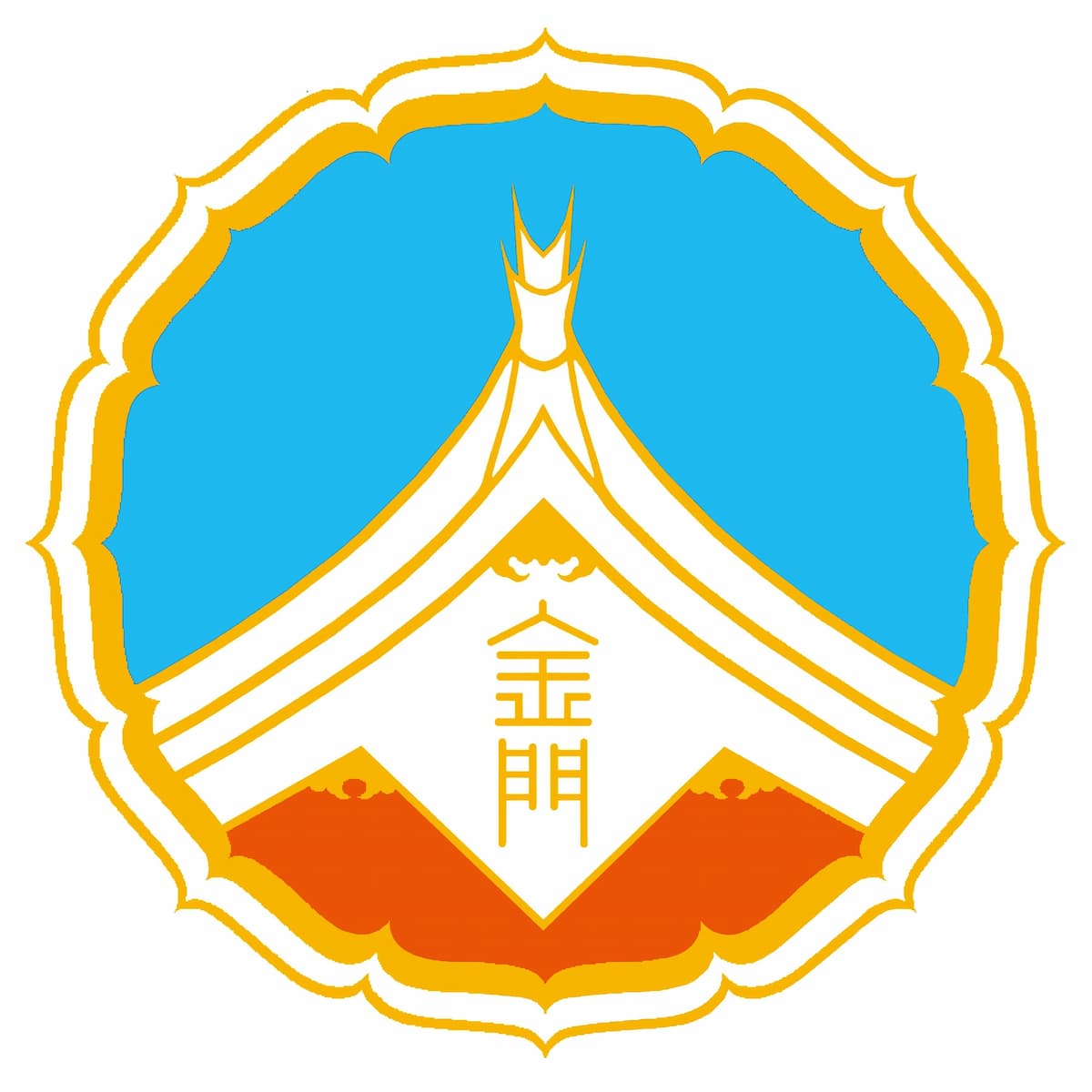
I found two posts about Kinmen architecture, which you can see in the Related Section below. Here are some of the most representative ones in eastern Kinmen.
Chen Ching-lan's House or Chen Jing-lan Western-style House 陳景蘭洋樓
Chen Ching-lan's House (the spelling written on the building) is the largest and most notable western-style old house in Kinmen. It's close to Kinmen Airport.
This building was built by Mt. Chen Ching-lan in 1921 after he found business success in Singapore. You will see his family stories at the exhibition inside.
Ruiyou School 睿友學校
Ruiyou School was funded by Mt. Chen Ruiyou in 1934, who made a fortune after running the business in Singapore. He requested his consanguinity to establish this school in his hometown, Bishan Village. He offered free tuition for children nearby.
This building is a mix of Baroque and Chinese styles. If you look closer, you will see decorations like a marching band, people, flowers, Taiwan national flag, and the KMT flag on the gable surface. Now this building has become a community exhibition center.
Traditional Fujian-style Old Houses
A different type of Kinmen old houses is influenced by Quanzhou of Fujian Province 福建泉州. Besides those preserved villages mentioned on Kinmen's travel website, you will find them in several areas when you explore Kinmen.
My friend and I enjoyed those old houses and spent a lot of time taking photos.Matzu Islands also have many well-preserved traditional old houses. If you are an old-house fan, Matzu is alsoa great place to visit on your list.
Please note that people still live in those houses. Therefore, please respect their privacy.
The dovetail ridge is also the depicted in Kinmen County insignia. Source: Kinmen County Government 金門縣政府.

Free Guide: How to Apply for Hiking Permits in Taiwan
Do you plan to hike high mountains but don't know how to apply for hiking permits? Look no further! Download this complimentary guide with instructions to help you navigate the application process seamlessly.



